Discover more from Pope Head Post
Since time immemorial, public statuary and monumental complexes have been used by the ruling elites to signal messages and sentiments to the hoi polloi. Urban propaganda has historically been one of the most powerful forms for manipulating public opinion. A favorite example of mine occurred during the propaganda war between Octavian and Marc Antony, with both figures competing for a kind of legitimacy over the people. When Octavian learned that Marc Antony, who had set up shop in Egypt, fornicating with an Egyptian queen and fashioning himself like a pharaoh, had committed to his will a desire to be buried in Egypt, Octavian pulled a masterclass in urban propaganda. He had the will read aloud to the people, and then loudly announced and began construction on his own Mausoleum, this one to be constructed in Rome as opposed to Egypt. The message was clear, Octavian was the true Roman, contrasted with Marcs “foreigness,” and any time a Roman would pass the Mausoleum they would be reminded of this. I could spend hours fawning over Ceasar Augustus’ ability as a propagandist, how he built his forum right next to his adoptive fathers, Julius Caesars, to visually solidify the link between himself and his recently deified great uncle, or even how he built statues of his familial line back to Aeneas and Romulus to remind the people that his gens was semi divine. The point being, that when a statue is commissioned and displayed by wealthy benefactors, there is a good chance that there is something else going on, a subtle manipulation intended.
________
Recently I read an ingenious piece by Mary Harrington entitled “We Get the Sculpture We Deserve,” criticizing (to put it mildly) a statue erected in honor of MLK, titled “The Embrace.”
The author goes on to dismember the current trends in public art, decrying the vulgarity of this epochal shift, one which reduces the legacy of MLK to a mishmash of bronze phalluses, reflecting a “commitment to a world stripped bare of anything too heroic, figurative, or ideological: one that had shed its dangerous fixation with the past, and pointed only toward a clean, innovative, universalist tomorrow.”
But for the sake of this article today, we will zero in on a specific passage from her essay.
These classical depictions are only tolerated when they subvert. For example, a new pieta in a classical format, can only be commissioned if it inverts the values of its original subject matter.
This is how we can contextualize Mr JAGO. The Vaticans favorite new artist.
_________
I first had the displeasure of seeing his “Pieta” when I stumbled upon it in Santa Maria in Montesanto, the ‘church of the artists’ in the fall of 2021. At first sight I was aghast, disturbed, it was a visceral reaction. Michelangelo’s ethereal masterpiece, the pieta, which displayed the Virgin Mary cradling the God Man after his descent from the Cross, had been twisted, mocked, made ugly.
Most explanations online for the intent behind the work, are as follows: “The sculpture is different from the classical iconography of the Pietà; Jago (full name Jacopo Cardillo) represents suffering, pain and deep sorrow of a young man for the loss of a “beloved” young woman whose abandoned body he holds strongly and desperately in his arms.
However, that is no woman in his arms. Look closely. There are no breasts (in all of Jagos depictions of women the breasts are prominent), the musculature is distinctly male if a bit neotenous. It is impossible to see from the internet, but the crotch area is smooth and contains no genitals. The only feminine aspect is the long hair. The dead, lifeless cadavers of the youth is a thematic fixture of Jagos works, as we will soon see. Haunting and repulsive.
When I first visited the statue, there was a woman on staff who was floating around the statue, answering questions for onlookers, not a nun or religious sort but some ghoul you would expect at a modern art museum. I asked her rather indignantly, “what is this displaying?” She responded with some tepid answer, “grief, pain.” I asked as to the identity of the individual he was holding and she said, “the child is genderless.”
The child is genderless. This is what the Vatican employed woman explained of the statue, the statue commissioned and promoted by the Bergoglian church. “How is this Christian?” was my final question. She frowned and looked at me quizically. “It isn’t,” she responded, as if it was the dumbest thing anyone had asked her all day.
So what do we have, a man who strongly resembles the artist (he admitted in an interview that the likeness was based off himself), holding a lifeless, genderless child. The Man is crying and in extreme grief.
There is a common satanic current in elite cults, where if one wishes to advance they must sacrifice a child, either symbolically or literally. I heard a story from a rich girl I knew whose friend was given over by her parents as a sex slave to further advance in their cult. In the ancient Mediterranean, many pagan cults employed the ritual sacrifice of children in times of great societal distress. Large swathes of the Old Testament are explicitly centered around God condemning and prohibiting this practice. The Carthaginians, the Canaanites and several other groups are described as engaging in these vile rites. This stands in stark contrast to figures such as Christ, or even Isaac, sons who willingly sacrifice themselves up to God the father.
The ritual sexual abuse of children (itself a kind of murder) is omnipresent in society today. This is controversial, that elite sex cults are doing these kinds of things. Where this is not controversial, is that this is happening in the Catholic Church. The institution that funded and displayed this statue. The ritual abuse of a child at the hands of a Catholic priest (a spiritual Father with his spiritual son) is a common occurrence.
These things frequently occur in a specifically ritualistic context. You can find evidence of this everywhere, you just have to look. A vivid example can be found in Malachi Martins Windswept House.
As anyone paying attention knows, these kinds of things frequently come on display in art, the perversity commissioned by a group. Again Im not going to go into every example here, that is not the point of the article. Lets just say that this kind of thing has been going on for decades.
(we all remember the vestments specifically made for world youth day right?)
Back to the mock Pieta. So instead of the loving Madonna holding Christ, with a serene look as the one depicted by Michelangelo, we have an inversion, remember the original pieta has a mother holding dead child, so wouldn’t it stand to reason that the thematic inversion is a father holding a dead child? But in this case, it is the father who did the deed, who defiled and murdered the child, and now weeps for it. All under the somber gaze of Christ crucified on the cross above him. Disgusting.
If this interpretation seems somewhat absurd to you, wait until the end of the article, once we contextualize everything through his wider body of work. Then you shall see.
How could the Vatican allow this? It used to be that anything this perverse, or at least ambiguous, would not ever be endorsed by the Vatican, MUCH LESS PLACE NEXT TO THE ALTAR OF A CHURCHES CHAPEL. How did they allow it? Hell they commissioned and endorsed it. Certain factions at least, certain factions intent on subverting and destroying the papacy, while flaunting it right in front of faithful catholics eyes, defiling a famous basilica.
We will say one more thing about the particular placement of the statue here, and why it was so specific, why its location is so symbolically important.
The church that housed the statue is located in Piazza del Popolo, on the church pictured on the left.
There is so much symbolic significance to its location, behind it is Via del Corso, a hot bed of masonic symbolism, which ends in the Altar to the Fatherland. (we will discuss the via del Corso stuff when I finally finish the damn manuscript). One important symbolic aspect is that its in the shadow of an obelisk. See my thread on obelisks if you want a comprehensive explanation of their history. Obelisks have been used as ritualistic fetish objects in Rome for centuries. There is a famous story of a boy being raped in the shadow of the Vatican obelisk during the Baroque era by a well connected Vatican official (some say Berninis brother or maybe Bernini himself), and this kind of stuff is frequently done in the shadow of an obelisk. Why? On one hand the obelisk is explicitly phallic. It represents the rays of the sun that GERMINATE the earth. However, in later Egyptian customs it also began to represent the artificial penis of Osiris. As the myth goes, Osiris is killed and dismembered by Set, who hacks his body into 14 pieces and then scatters them across the nile. His wife Isis finds the pieces and pieces him back together, but she cannot find the penis as it was eaten by a fish. She creates a magical artificial penis, attaches it to Osiris, brings him back to life, and then copulates with him and his fake dick to create Horus. Oh, and here is a completely unrelated image of John Podesta.
Im just going to let you chew on all that.
One more thing about the location, and I know this is a lot, but there is something unknown to most about the two churches that was just confirmed recently by modern archaeology. Under the two churches that stand in Piazza del popolos entrance (the church with the JAGO statue being one of them), are ancient Roman Pyramids, similar to the Pyramid of Cestius….
Above a pyramid, in the shadow of an obelisk, at the historic entrance to Rome, so stands a monument to something dark, something perverted, commissioned by the Vatican, in a once holy chapel.
Oh this is only the beginning. Were just getting started.
__________
Jago became the Vaticans new favorite Wunderkind very early on in his career, unexpectedly, and then had a meteoric rise. He enjoys privileges only few artists have today. This relationship (supposedly) began when Jago was commissioned by the Vatican to create a bust of Pope Benedict XVI in 2009. This initial bust was very strange, and atypical for JAGO. JAGO had gained his reputation for his incredible attention to detail. It is obvious in all of his work. Go now and look up some of his statues and it will become obvious what I am talking about. All but one. This bust of Benedict.
It almost looks like its unfinished….
The second oddity of the statue, is that it had no eyes.
The statue did not receive much attention. That is, until Benedict XVI resigned.
Once he resigned, Jago supposedly has the genius idea to strip the statue bear of clothing, revealing a wrinkled, decrepit man. The statement he was making (at least on paper) is he was depicting the Pope returning to the status of a mortal, Benedict XVI to Ratzinger.
Now that attention to detail, those intricate wrinkles, that looks far more like Jagos work, does it not?
Here is a side by side.
And not only that, but he added the eyes. Eyes that employed a bizarre optical effect, where they followed you no matter where you are in the room.
It’s almost as if, the original work was planned, as if he wanted it unfinished, so that with the resignation he could strip away the clothing an add the eyes. I mean, the eyes optical effect is so carefully planned out, why would he not have added it originally? Its so obvious that the original work was purposely unfinished, with the final product that which he had in mind. But… how could he have known that Benedict would resign, back when he created the statue in 2009?
____________
There is widespread suspicion that Ratzinger was forced to resign, that the entire resignation was orchestrated by certain factions in the Vatican, along with foreign actors. Ive spoken of this extensively in the past. Here is one testimony worth considering:
Retired Italian General Piero Laporta famously reported a run in with a cocky NSA agent who bragged “about the resignation to which H.H. Benedict XVI of revered memory would soon be forced.” BACK IN 2005. Eight years beforehand.
There were many groups involved in this maneuver, spanning US intelligence agencies, Vatican circles, Roman cabals, the Chinese, etc etc. It is not the goal of this article to give a comprehensive analysis of this however.
(Lets also remember that Wikileaks revealed the US state department had sent multiple messages to the Vatican endorsing Bergoglio in the 2005 conclave, this had been in motion for a long time).
The bigger question again, is who knew what when?
Is it possible, that whoever in the Vatican commissioned the work, had told JAGO about the upcoming resignation, had planned out the final product beforehand back in 2009, awaiting the day where JAGO could finish the project as a bizarre humiliation of the Pope? Consider please, the masonic significance of the Eyes.
Now to get more disturbing, watch the video Jago himself produced, documenting the changing of the statue.
In the video we hear the words of Benedict XVI played backwards, as the artist gleefully destroys the cross and papal vestments.
But now, it is time to get even stranger.
Ok, so lets say JAGO knew of the resignation, that it was commissioned by someone in the Vatican with knowledge of what was going to happen. Why? What is this signaling? Here is where I believe I have figured it out.
JAGO himself said that the statue is supposed to originally represent Benedict XVI as Pope, and then stripped away as Ratzinger as a mere man. Thats why after the change it was reentitled Habemus Hominem, we have a man.
But wait.
JAGO stated that partial inspiration came from Adolfo Wildts portrayal of Pius XI.
But what did the Bust of Pius XI represent?
What if the statue of Benedict is not merely Benedict, but the Roman Catholic Church itself? “the ring of Peter is more important than the hand that wears it.”
If JAGO was simply portraying Benedict as striped from his Papal role, portraying him as now merely a man, why does he still wear the ring of Peter in the finished product?”
JAGO removed the cross, the vestments, yet kept the Ring? The very symbol of papal authority?
Could he be implying that with the resignation of Benedict, the Bergoglian papacy would strip the office from its vestments, would destroy the very cross of the church, and be only a feeble shell of what it once was? And then of course, the adding of the eyes. The papacy now has the masonic eyes. The all seeing eye, what else is the optical trick accomplished with the Benedict statue? The eyes see you no matter where you are in the room. Seeing everything. The Pope now has been stripped of the cross and given eyes. A statement of the ultimate triumph of the masonic infiltrators over the Holy See with the assumption of “Pope” Francis.
One more thing on the Benedict bust, that will set the stage for everything I explain going forward.
And there it is. Cardinal Bertone. A wicked, terrifying figure. Believed to be one of the kingmakers behind the ascension of Pope Francis, and all the machinations involved. At the time the Secretary of State for the Holy See. There are also reports that he was part of the alteration and cover up of the Third Secret of Fatima, that he was behind the dismissal of Abp Vigano. Remember, it was Vigano who was investigating the IOR (Vatican Bank) and the massive corruption and money laundering that was occurring there. Bertone is accused of “mismanaging” millions of IOR money, and lived and extremely lavish lifestyle. He is also widely believed to be a Freemason.
Ill let you put all those pieces together yourself…..
Important artists tend to have wealthy benefactors, who instruct them on emphasizing certain themes in their work.
__________
Let’s now analyze another one of JAGOs works, which emphasize the masonic connections.
First, let’s look at how he self stylizes his name.
This is always how he prefers to represent his own name, and anyone who is even remotely aware of Masonic symbolism can see the obvious here.
But more importantly, what truly solidifies this masonic link is his work the “Veiled Son” in 2019.
Before we even begin to examine it, we must look at the larger context. Just as his mock pieta was his own take on the famous scene of Jesus, so too is the Veiled Son an interpretation of another famous statue of Jesus, from his home city of Napoli. The Veiled Christ in the Sansevero Chapel.
And what is even more fascinating, and damning, is the story behind the original Veiled Christ statue and the church it is in. The Sansevero Chapel. A Chapel explicitly linked to Freemasonry. Probably the most explicitly linked chapel to Freemasonry in the entire world. And this is not some veiled (pardon the pun) conspiracy, this is freely admitted and explained on even the official Naples visitor website. To demonstrate how well known this is, I’ll post an excerpt from the official site on the chapel.
Long time readers will be familiar with the Sansevero Chapel, as I discussed it in my article on the Wandering Alchemists. It is imperative you all to read it first before we continue.
__________
The point is, that even today the Chapel is a hotbed for weird Masonic stuff.
In a later post, I will detail all the modern weirdness, how it involves famous Hollywood directors and actors, but I don’t want to get off track.
__________
The veiled son, JAGOs take on the Veiled Christ, was once again commissioned by mysterious church benefactors, and it was publicly displayed but walking distance from the Veiled Christ of the masonic Sansevero chapel.
Another dead child, like in the mock pieta. And yet its belly is bloated, almost as if it were pregnant, another weird inversion, implying something dark and sexual had occurred before.
There is another element that symbolically binds the veiled boy and the figure of the pieta, that no one has picked up on. (hell no one has picked up on any of this I don’t know why I keep repeating that).
In both of the statues limp and lifeless hand, a stone fallen from their fingertips…
What does it mean? At the very least it connects both figures thematically.
There could be various interpretations.
However, it will be clear in a moment what this all probably represents.
________
Inversions of Christ. Dead Children. Implied sexual abuse. Masonic symbolism.
These are the themes expected of an edgy black metal band, not the themes expected of an artist praised by the Vatican, whose statues are allowed on sacred ground.
_________
One more note on the two statues we have covered so far. There is only one other figure who appears in Jagos work that looks like the older man from the Pieta.
It comes from a seemingly unfinished work of JAGOs.
There. There it all is.
If you had any doubts of the sexual element in the mock pieta, there is a statue of the same figure who held the boy, raping a much smaller figure.
The scene is supposedly of the rape of Cassandra at the hands of Ajax.
Remember how both the veiled son and the pieta child both had rocks fallen from their hands?
Take a look at what the figure in the last picture is holding.
From other angles it is even more obvious. She is holding a stone.
The figure in the middle of being raped is grasping a rock, while the bald man is trying to grab it away. Before the sexual assault, the rock is still being held, after, the rock falls from their grasp.
This is the lynchpin. This thematically proves the fallen rock of the pieta and veiled son imply rape.
_____________
Jagos powerful benefactors have afforded him opportunities most young artists could only dream of.
For example, did you know the first marble statue ever sent to space was one of JAGO’s? In 2019, his work entitled “The First Baby.”
Or how about how in 2020 when he released a work entitled “Look down.” A statue of a baby chained to the ground, showed publicly in Napoli.
This baby chained down, as satan himself would be chained to the pit. “Look Down.” The child is below. More and more, I began to understand the theme present in Jagos work. I always knew it was antichristical, but now I was realizing it was possibly depicting the antichrist himself.
As the statue Look Down was installed in the Piazza in November, it remained their for several months. Most importantly, for the month of December. Christmas of 2020. What was the immense astrological significance of December 2020? Well above the sky starting on December 21, the first great conjunction of Saturn and Jupiter occurred in 800 years. A great conjunction of Jupiter and Saturn is a profoundly important astrological event.
Johannes Kepler, 400 years ago, hypothesized that such a conjunction, was indeed the Star that heralded the birth of Christ.
If the ritualistic significance just ended there, I might be willing to dismiss it. But of course it doesn’t.
When Jesus starts his ministry he goes out into the desert for 40 days and 40 nights, where the devil takes him atop a mountain to tempt him.
After several months of the chained baby being displayed in Napoli, for reasons unknown to anyone, the statue was moved to where it currently resides. The Al Haniya desert.
“The sculpture was intentionally placed at the meeting point of mountains and desert.”
It was at this moment of writing this article, that I came to a terrible realization.
I had just finished rewatching Passion of the Christ yesterday, and remembered watching a speech done by the lead actor Jim Caviezel. He spoke of the inexplicable things that occurred during the filming, how bizarre it was that he had been asking to play Jesus Christ, when the year he was asked his initials were both JC and he was 33 years old, the same age of Christ in his ministry. That maybe God had chose all these coincidences to create the great piece of art that was the Passion of the Christ. And then it hit me.
Jagos birth name is Jacopo Cardillo. JC. The year Jago unveiled both Look Down he was 33 years old.
Is it possible, that we are witnessing the demonic artistic counterpart to the Passion play, that his whole canon is a representation of the birth of some form of true evil?
______________
Before you go harassing Mr JAGO, remember this. He may be totally unaware of any of this, but a pawn of darker benefactors, or maybe forces even darker.
However, lets look at the very name that he chose. Could it perhaps be a reference to the character Iago/Jago of Shakespeares play Othello?
Iago, who was quite possibly the most vile and heinous villain in all of Shakespeares works. A master manipulator. A character defined by a perverse carnality, along with an inability or unwillingness to express his true motivations….
______________
I have given you much to chew on, but there is still more to come. What ties the masonic threads altogether, the location of his largest exhibition.
But for that, you will have to wait for my article on Via del Corso. In the meantime, read my wandering alchemist thread, and you might be able to figure it out on your own.
_______________
“Were I the Moor I would not be Iago.
In following him I follow but myself;
Heaven is my judge, not I for love and duty,
But seeming so for my peculiar end.
For when my outward action doth demonstrate
The native act and figure of my heart
In compliment extern, ’tis not long after
But I will wear my heart upon my sleeve
For daws to peck at. I am not what I am.”
_________________
Subscribe to Pope Head Post
Papal history and deep topography.







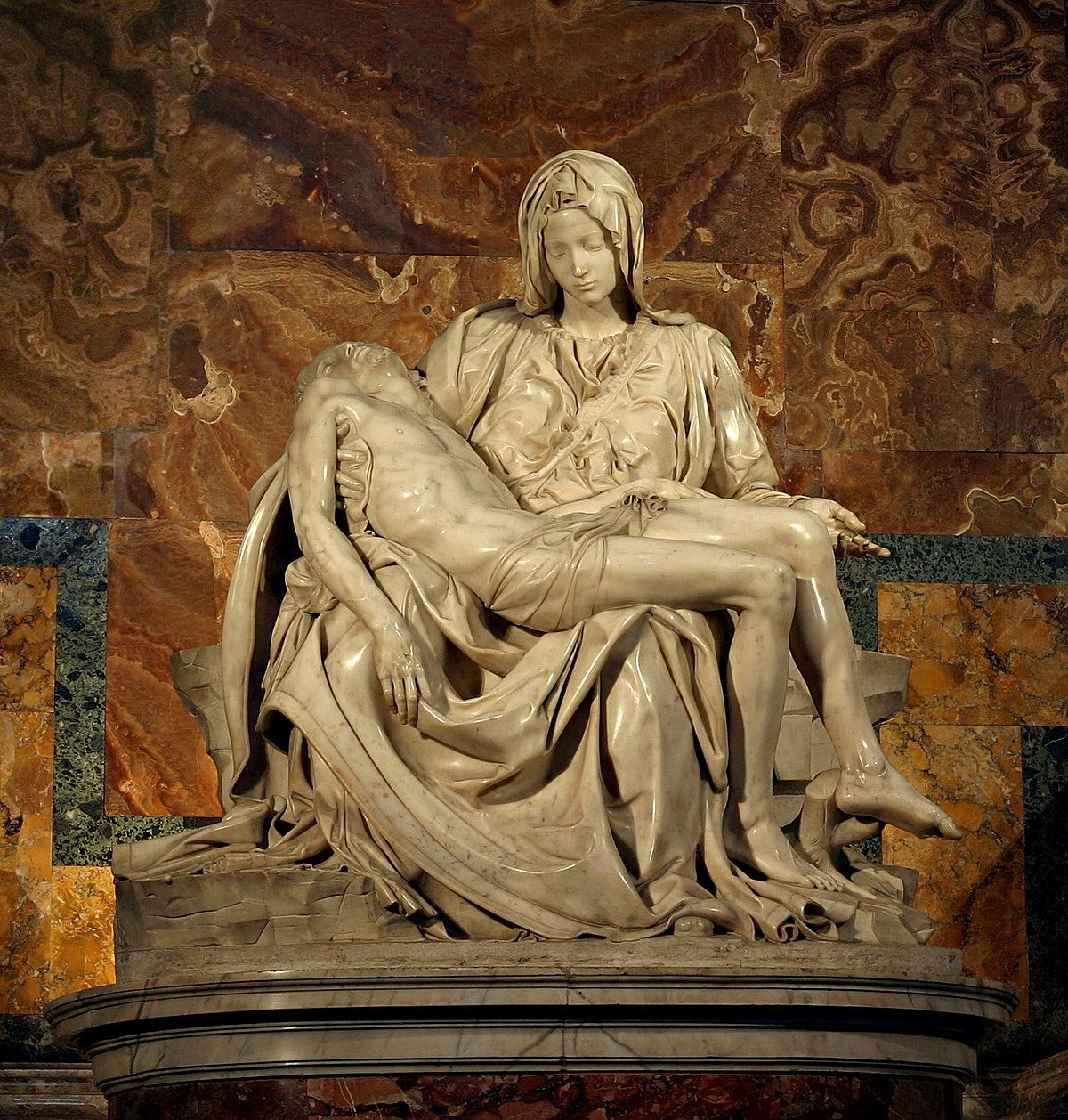
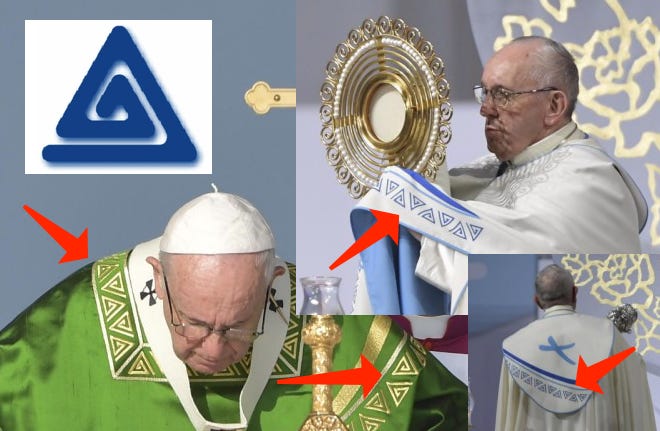





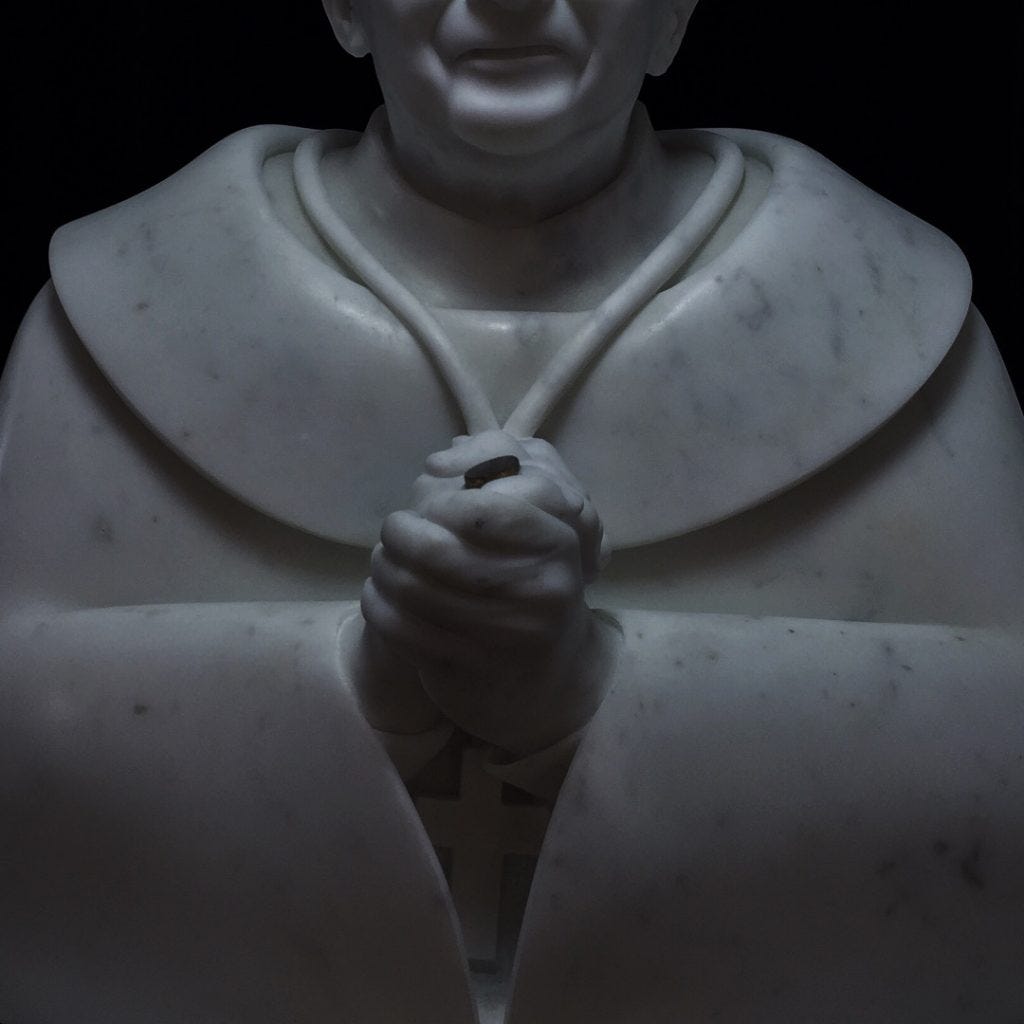
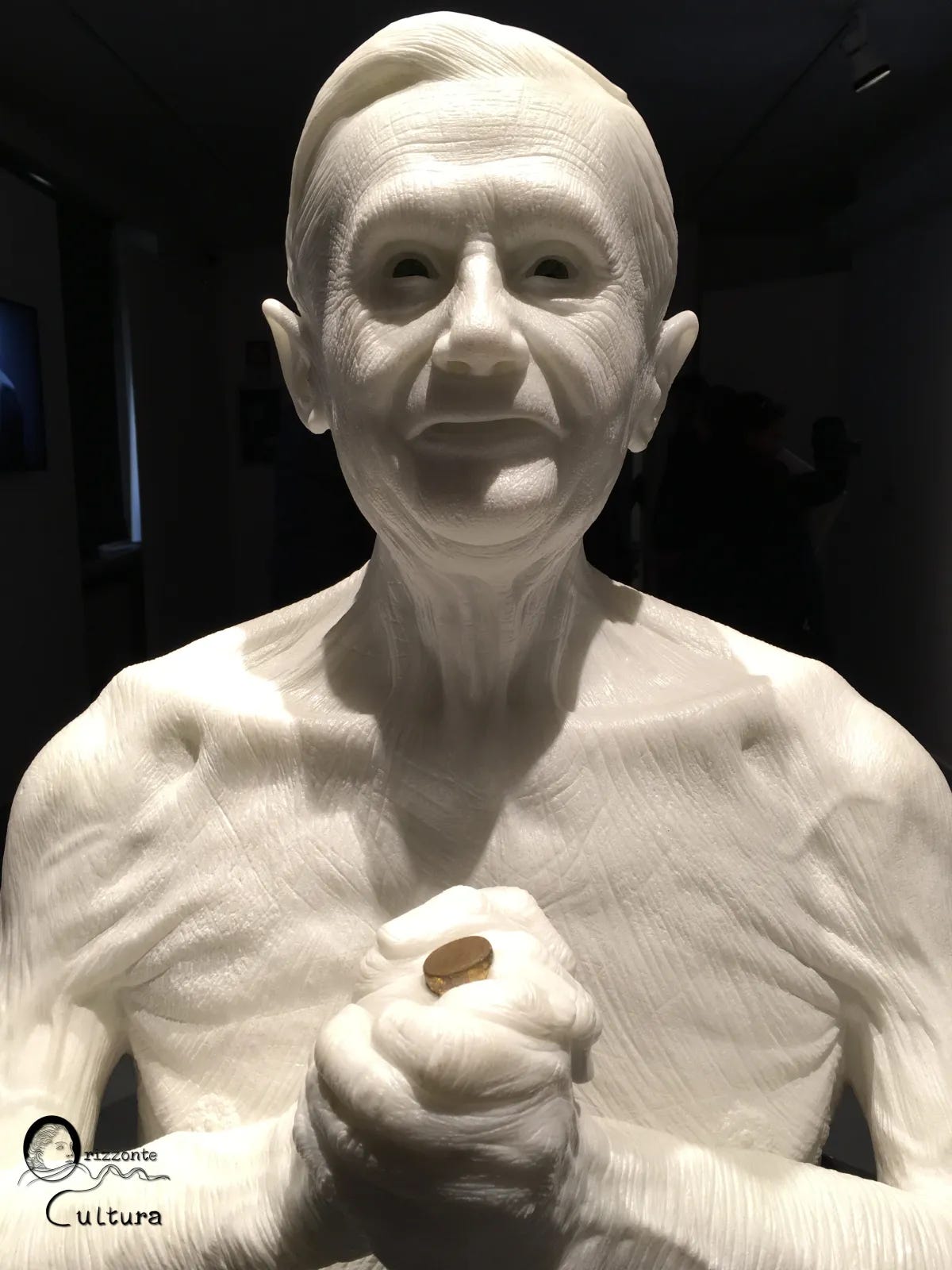
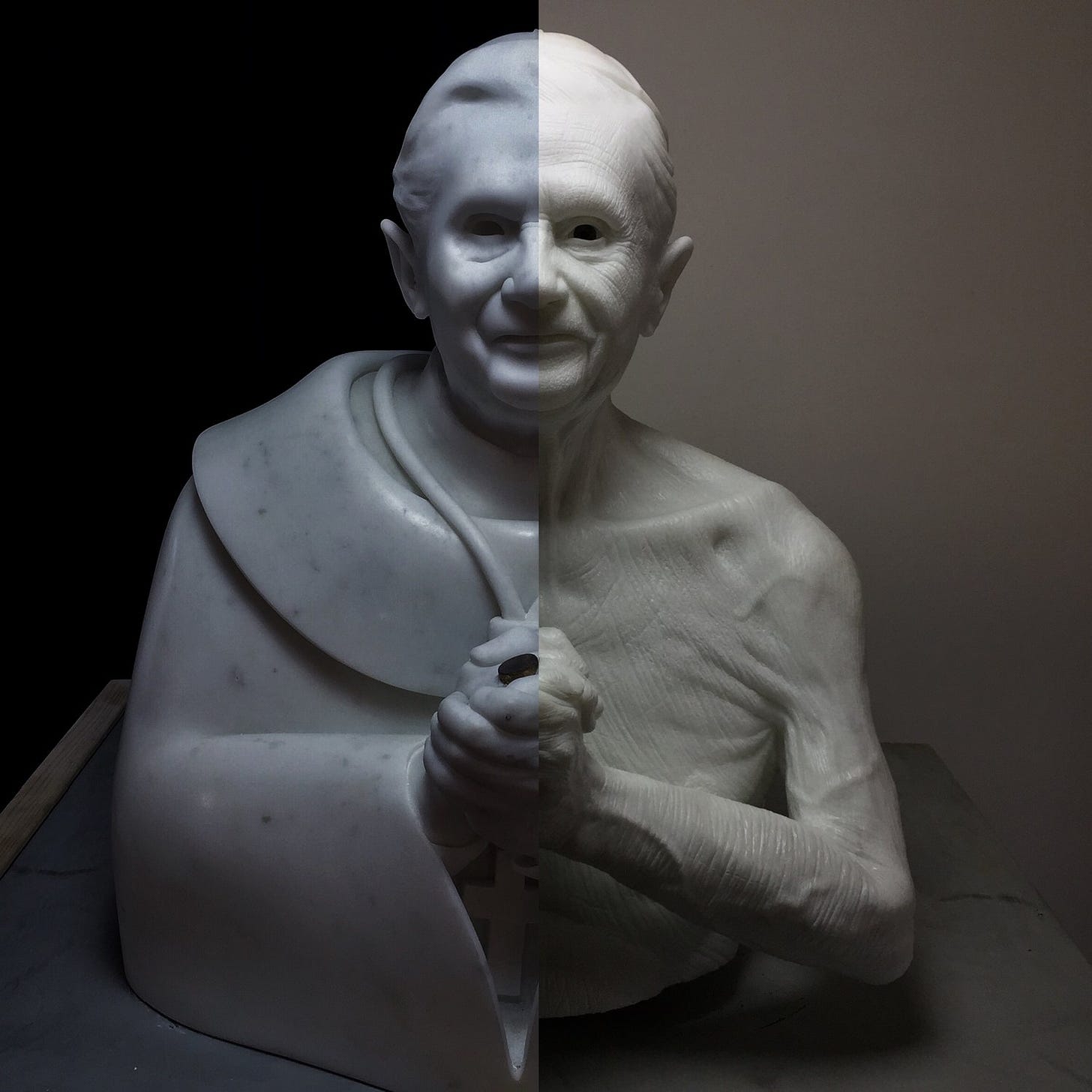
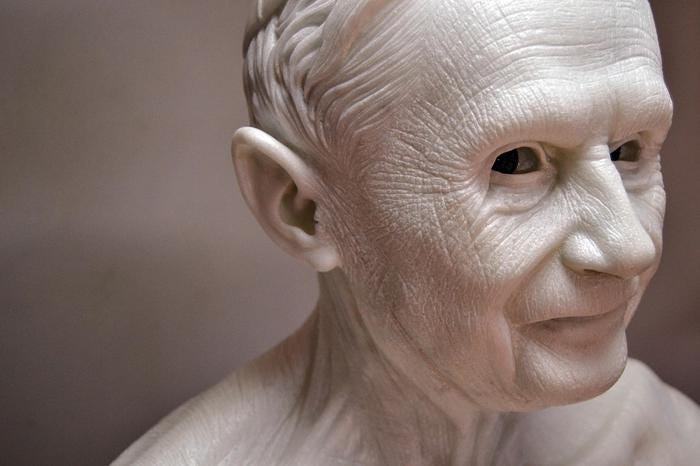
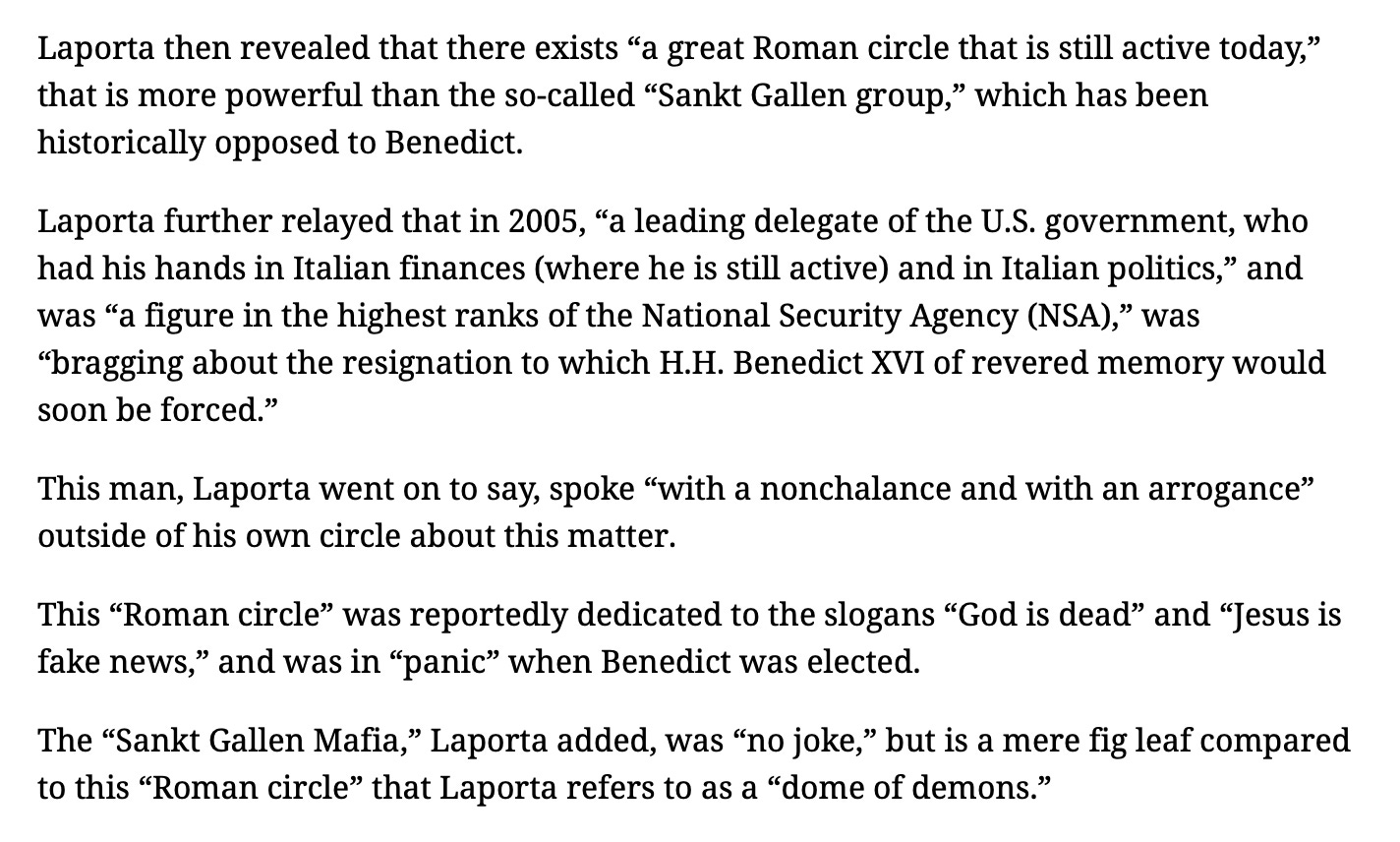





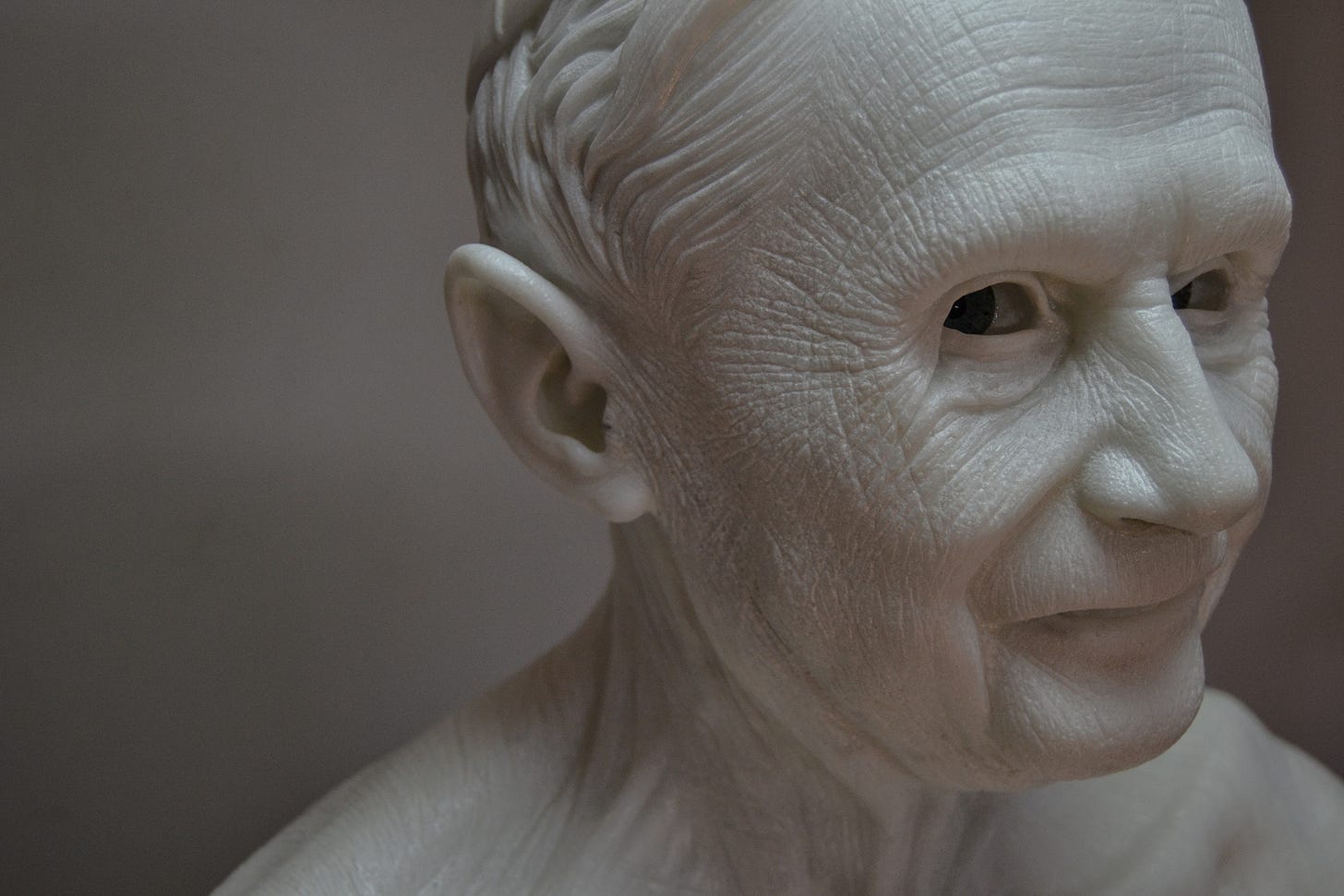



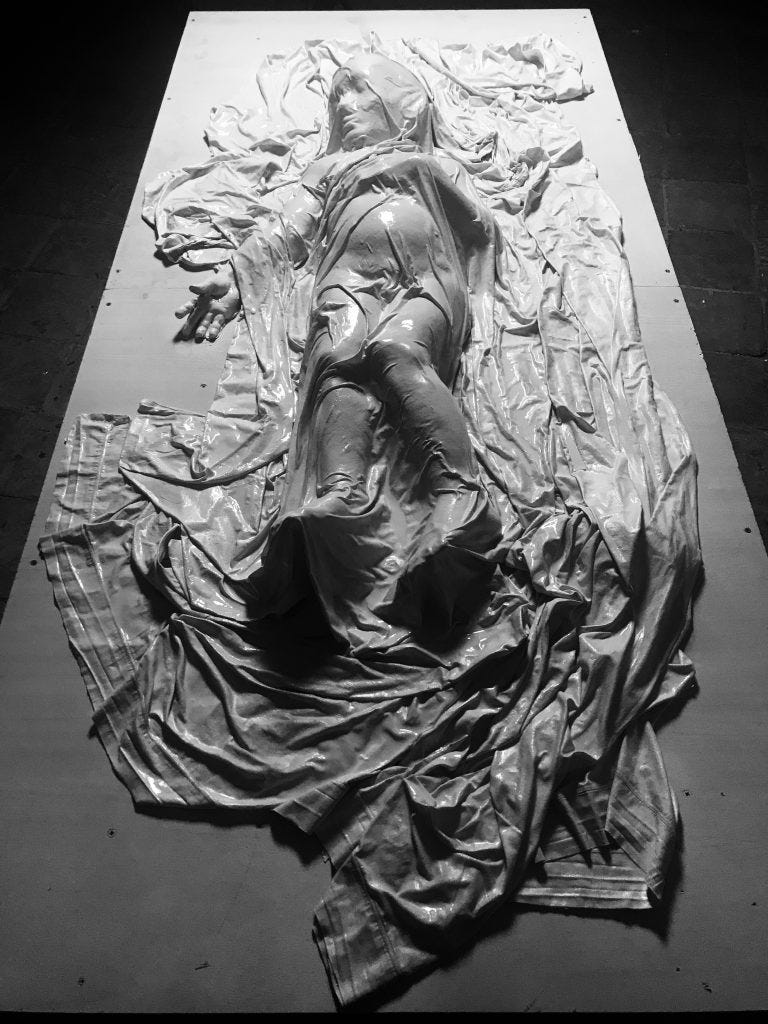
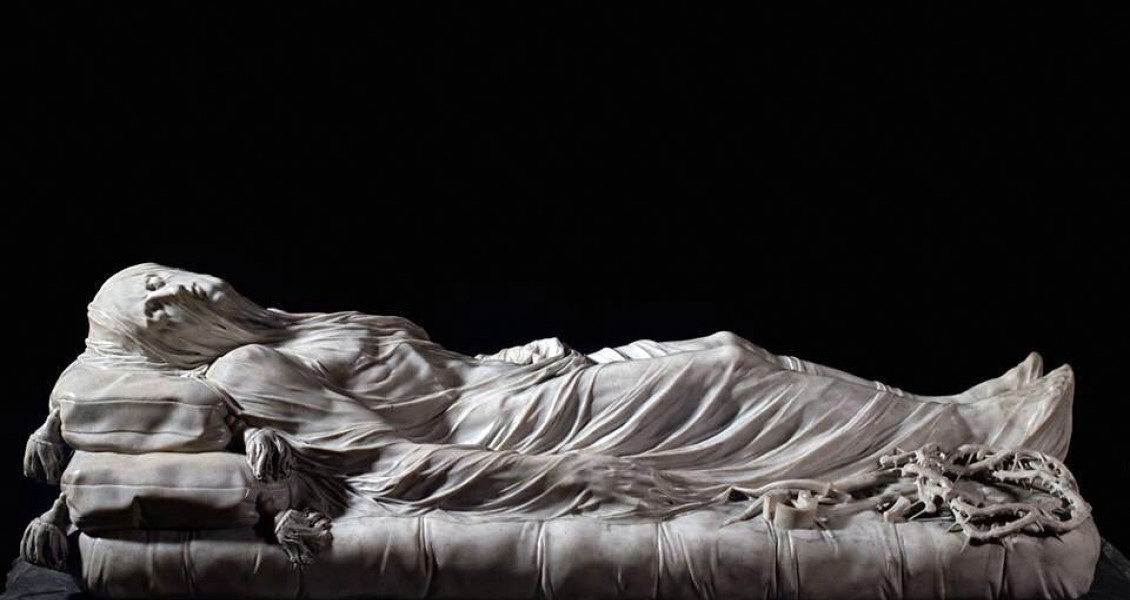


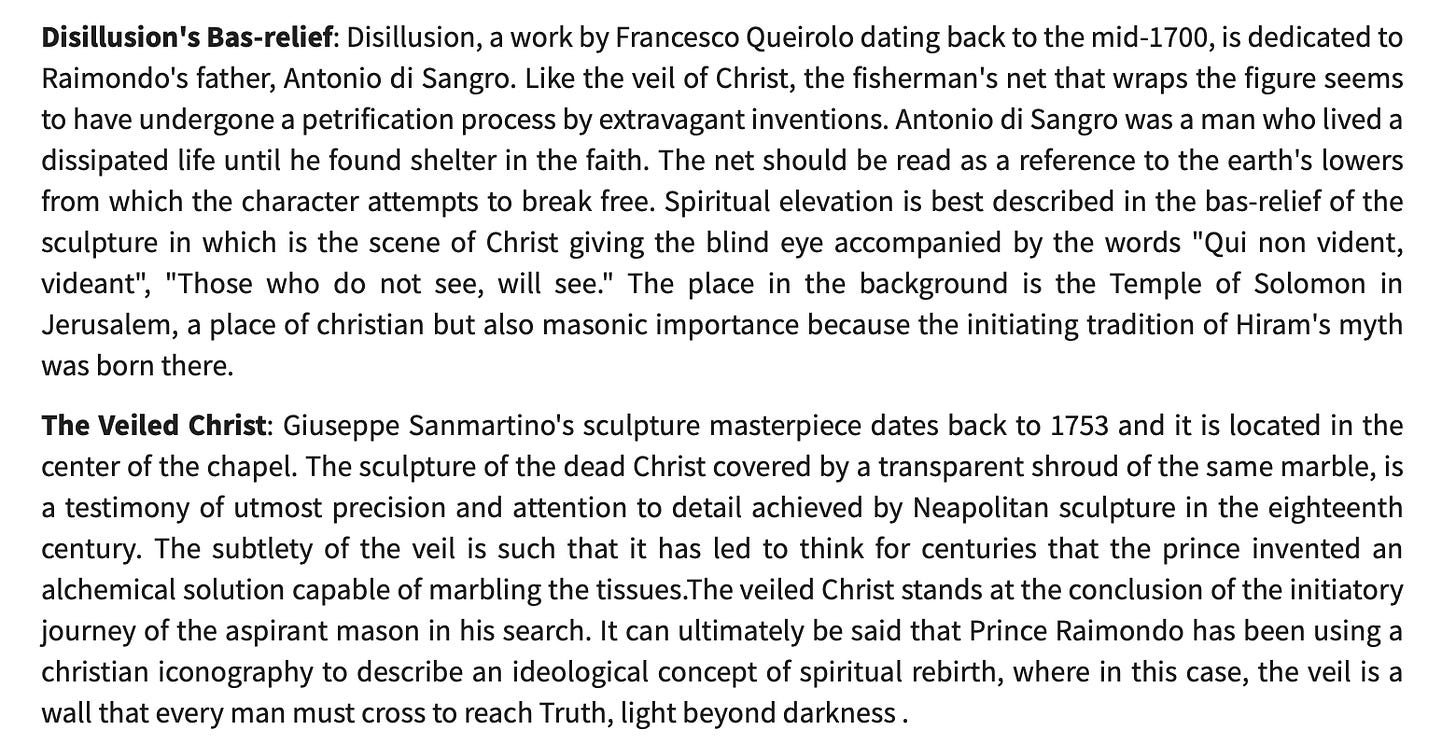


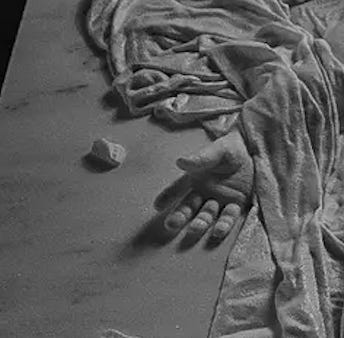
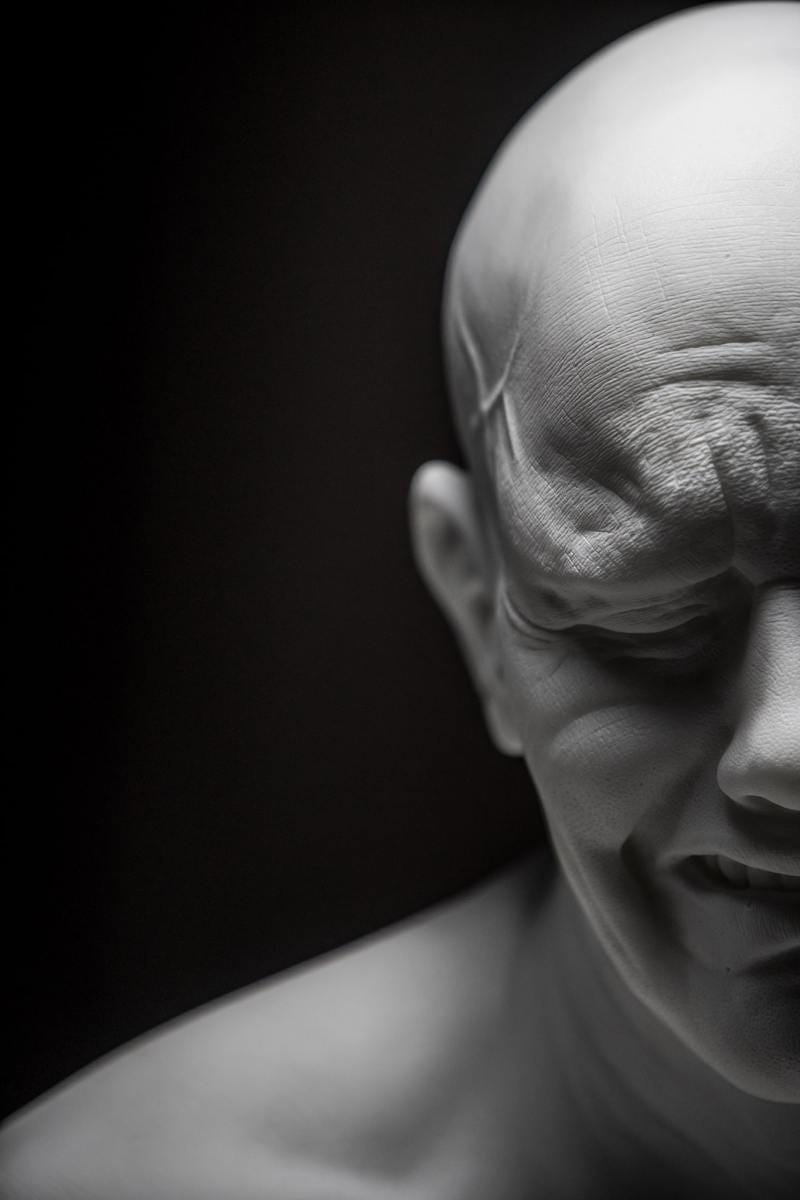

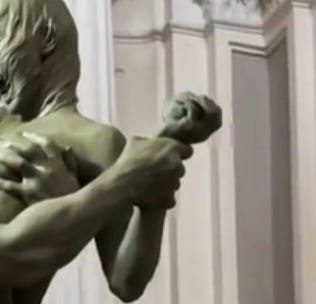

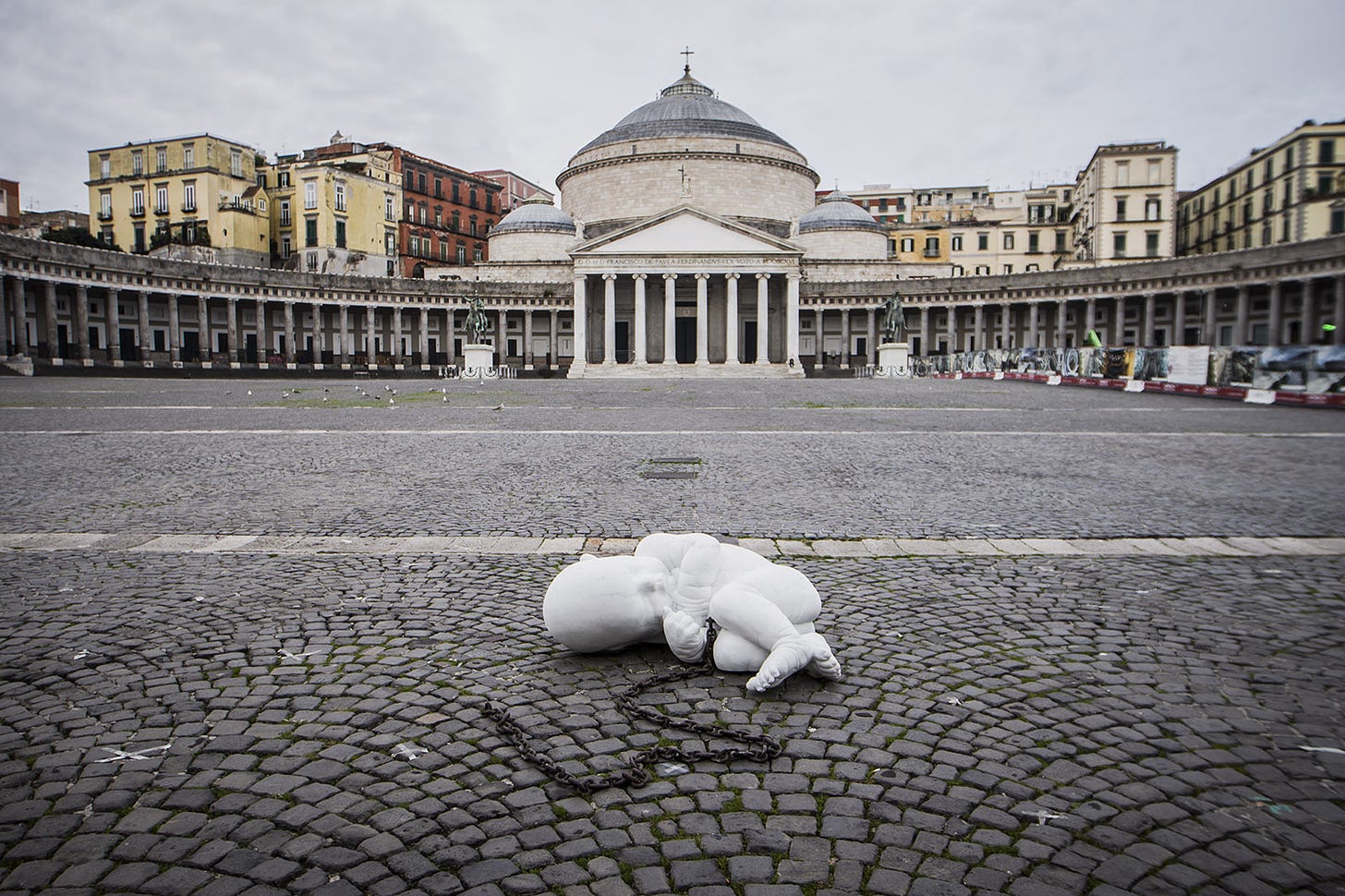

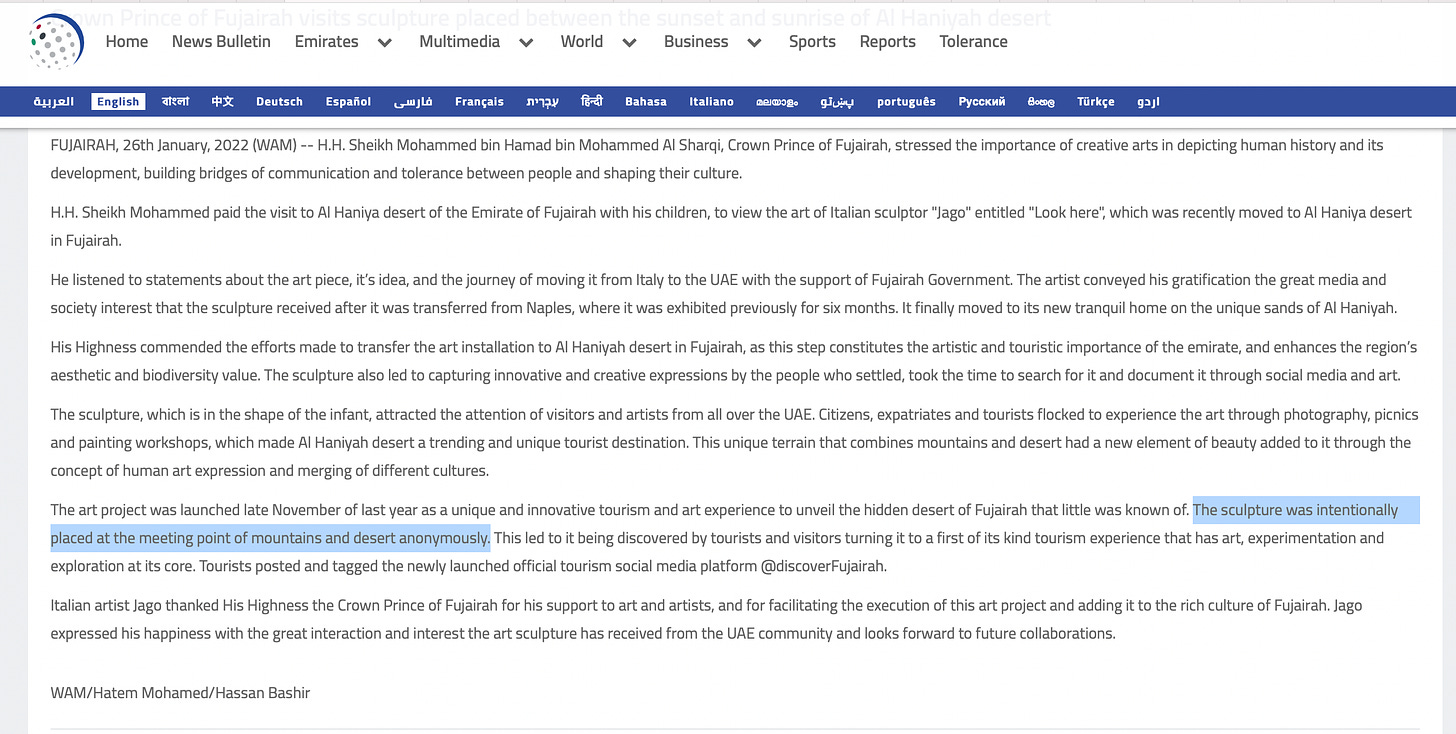
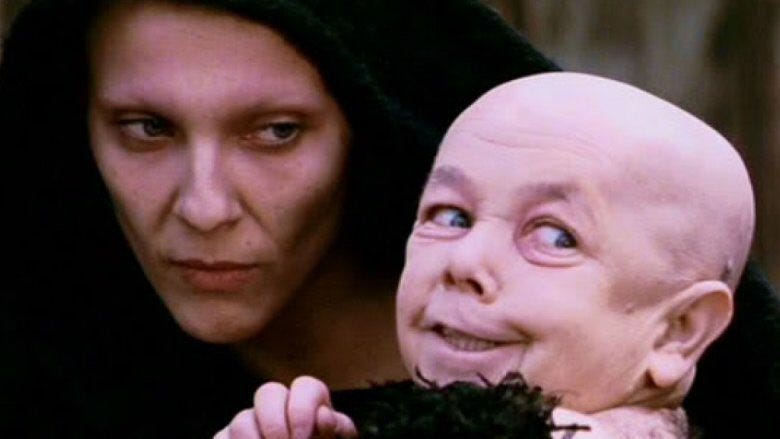











Killing the child that you sexually abused is a tradition that comes back to Emperor Hadrian and his boy-lover Antinous: they journeyed to Egypt, then Hadrian drowned the boy in the river Nile as a human sacrifice for an unknown ritual. Hadrian grieved him for a long time - like Jago's Fake Pieta, crocodile tears - and declared him a god to be wroshipped. Surely it had to do with Osiris, like you said. This is terrible, thank you for your work and for making us think.
Thanks for this work. It is painful to read.
The Song of Songs speaks of the dark and the beautiful. It is mystery how these appear in the same body.
Are the most wicked and the most just intended to be united in the same corporeal body? Is the height of wickedness exactly the sign to hold ground rather than flee because it’s proof of sacred ground?
I have heard that ratzinger might have believed something like this.